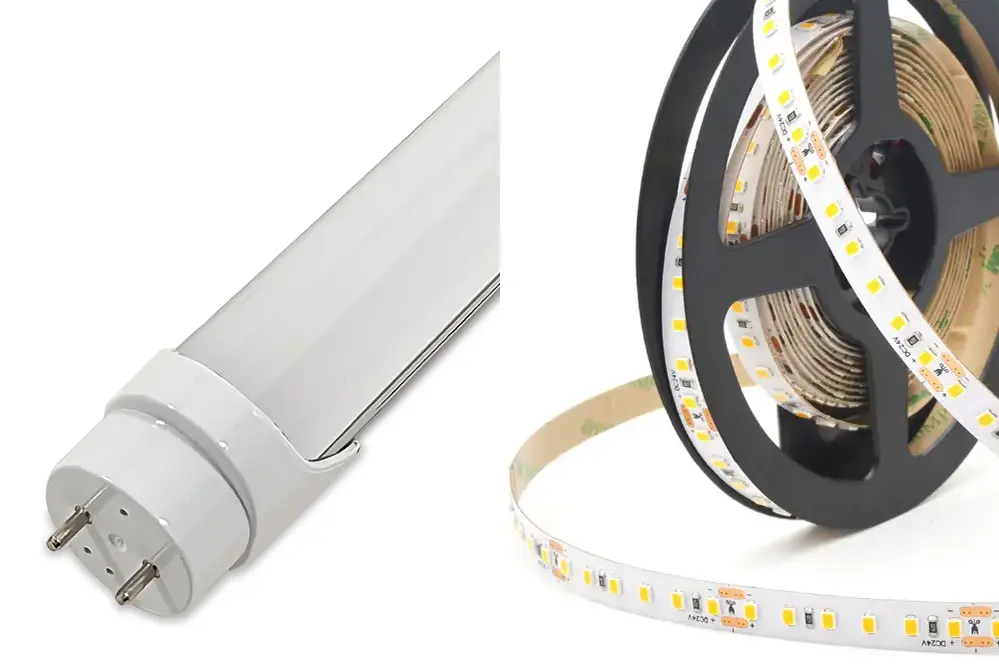Selecting the precise type of lighting is paramount to shaping both the efficiency and ambiance of any given space. In the realm of modern lighting solutions, the decision often whittles down to a choice between LED tubes and LED strips. Each type, including T5 LED tubes, comes with its unique set of advantages, and understanding these can significantly influence how one can harness the power of light to optimize their environment.
The debate between LED tubes and LED strips isn’t merely about form factor—it’s a deeper comparison involving flexibility, application, and energy efficiency. Where LED tubes can offer robust illumination suitable for broad, general lighting needs, LED strips present a versatile and customizable choice, ideal for accentuating features and creating distinctive moods depending on their color temperature. By analyzing their benefits and potential use cases, especially focusing on innovations like T5 LED tubes, one can envision a more dynamic and tailored lighting solution.
Tom, a seasoned professional in the LED lighting industry since 2005, brings invaluable insight into this discourse. With a wealth of experience particularly in LED strip lights, he’s witnessed firsthand the evolution of LED technology. His expertise provides a balanced, nuanced view of the practical applications and innovation that both LED tubes and strips bring to the table, ensuring readers receive well-rounded, expert guidance.
Ready to illuminate the path to optimal lighting? Let’s dive right in and explore the nuanced contrasts between LED tubes and LED strips, equipping you with the knowledge to make the perfect choice for your lighting needs.
Overview of LED Tube Lights
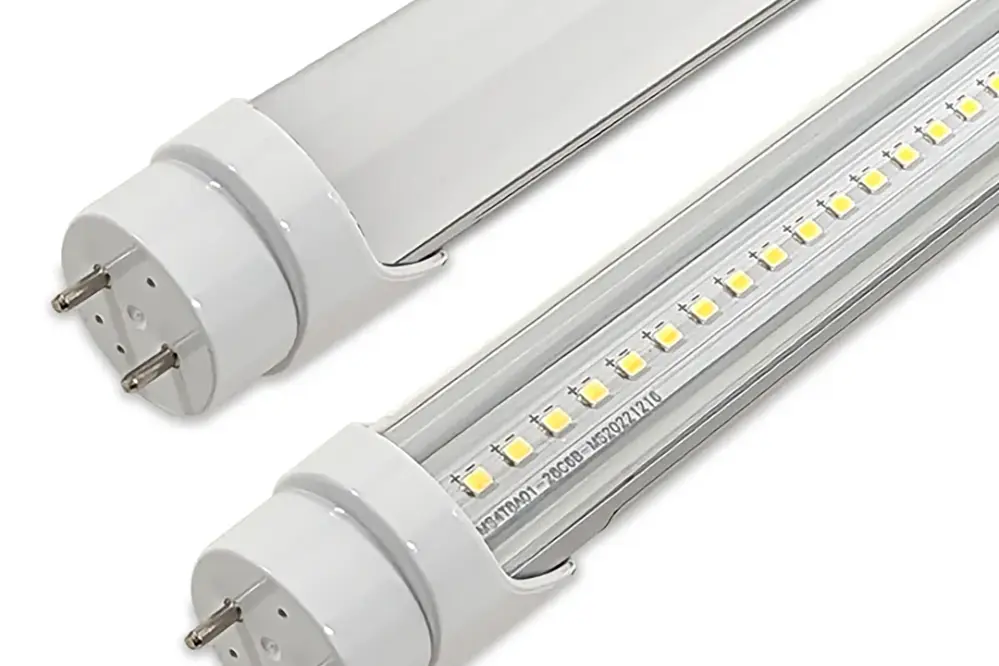
LED tube lights exhibit superior longevity, making them an optimal choice for various lighting needs.
These lights, which are designed to replace conventional fluorescent tubes, offer significant energy savings, reducing the environmental footprint while ensuring ample illumination. Often found in offices, schools, and commercial spaces, LED tube lights are renowned for their efficiency, boasting up to 80% energy savings compared to traditional lighting systems.
Energy efficiency is merely one of many benefits they offer, including a high CRI which ensures vibrant and accurate color. They provide consistent and high-quality light output, which significantly reduces eye strain and improves the visual comfort of occupants.
Moreover, their installation is straightforward, allowing for easy retrofitting into existing fixtures without the need for drastic modifications, especially when considering voltage compatibility. This adaptability, coupled with their durability and low maintenance requirements, especially when used with a triac dimmable power supply, positions LED tube lights as a wise and sustainable investment for any lighting application.
Overview of LED Strip Lights
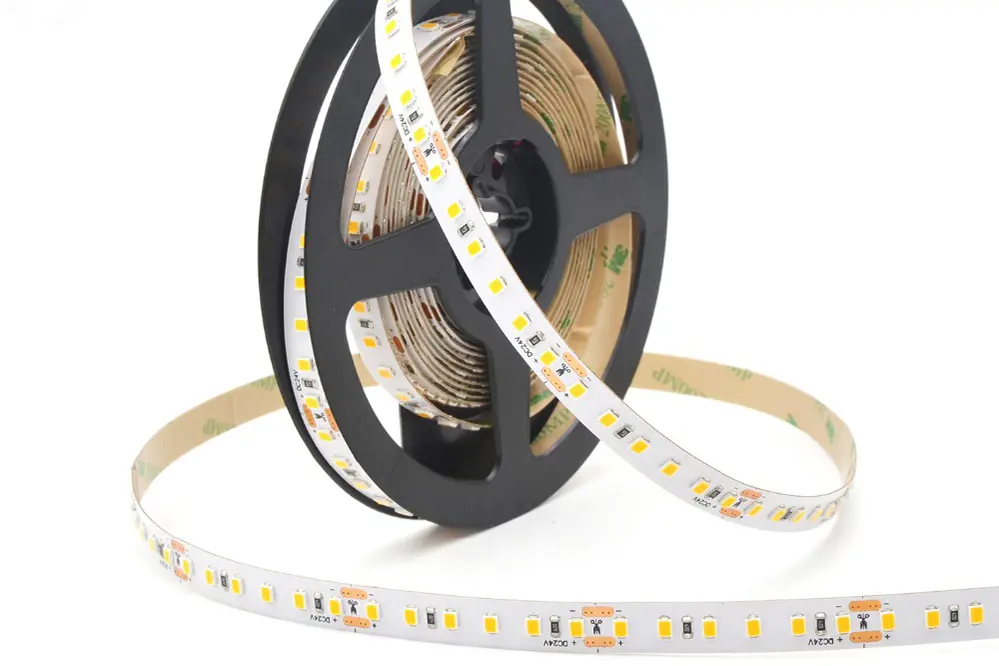
LED strip lights offer versatile lighting options.
They come in flexible strips that can be easily cut into desired lengths, and are often paired with dimmer switches to enhance control over lighting levels. This adaptability makes them ideal for a range of applications including accent lighting, under cabinet lighting, and even outdoor setups. With an array of colors and brightness levels available, they provide ample customization to suit any aesthetic preference.
They are easy to install.
Users appreciate their adhesive backing which simplifies the installation process.
Additionally, LED strip lights are energy-efficient – they use less power compared to traditional lighting sources while delivering vibrant and consistent illumination. This makes them not only an environmentally friendly option but also a cost-effective long-term choice.
Their popularity continues to grow as advancements in technology enhance the brightness, efficiency, and versatility of these lights. As the year 2023 progresses, expect to see even more innovative uses and designs, proving that LED strip lights are far from being just a trend. Instead, they represent a dynamic evolution in lighting solutions that will illuminate countless spaces brilliantly.
Key Differences: LED Tube vs LED Strip
When comparing LED tubes and LED strips, significant distinctions, such as their typical operating voltage, emerge that influence their uses and applications.
First, LED tube lights including T5 LED tubes and T8 LED tubes are typically designed to replace traditional fluorescent tube lights. They come in standard lengths and are straightforward to install in existing fixtures.
LED strip lights, conversely, offer unparalleled flexibility in design and can also come in 5000k to provide a bright, daylight-like illumination. They can be cut to size and shaped around corners, making them ideal for creative and custom installations.
Another key difference lies in the brightness and focus of the illumination. LED tube lights generally provide a more focused beam and are best for task lighting, while LED strip lights offer diffused lighting, suitable for ambient or accent purposes.
Overall, examining the attributes of LED tube vs LED strip reveals that each lighting option excels in unique areas, catering to different needs and preferences.
Installation Process
Both LED tube lights and LED strip lights offer distinct installation processes.
Installing LED tube lights including T5 LED tubes and T8 LED tubes is relatively straightforward and often involves retrofitting existing fixtures. One must remove the old fluorescent tube, bypass or remove the ballast if necessary, and directly wire the new LED tube. Consequently, this process ensures a quick and effective replacement ideally suited for those seeking to upgrade their lighting without extensive modifications.
LED strip installation is different.
The installation process for LED strip lights is versatile – they can be mounted using adhesive backing or clip systems and often require connecting to a power supply. Their inherent flexibility allows for creative applications such as under-cabinet lighting or highlighting architectural features.
This ease of customization makes LED strip lights an attractive option for those looking to enhance their spaces with innovative lighting designs. While LED tube lights provide a more traditional approach, the adaptability of LED strip lights empowers users to infuse their environments with distinctive and captivating illumination.
Energy Efficiency Comparison
When comparing LED tube vs LED strip lights, energy efficiency is a critical aspect to consider.
LED tube lights, designed to replace traditional fluorescent tubes, typically offer impressive energy savings with their high lumen output per watt ratio. This efficiency means they consume significantly less power to produce an equivalent amount of light, making them an exemplary choice for applications where extended use is common, such as in commercial or industrial settings.
Conversely, LED strip lights are also highly efficient but in a more customized manner. By allowing users to install lighting exactly where it is needed, they reduce the unnecessary consumption of excess lumens, efficiently focusing the light only where it is required.
Both types of LEDs boast long lifespans, reducing the need for frequent replacements and conserving energy over time. An informed choice between LED tube and LED strip lights can thus result in substantial energy and cost savings, while simultaneously enhancing lighting quality and contributing to a more sustainable environment.
Lifespan and Durability
When comparing LED tube vs LED strip lights, longevity is an essential consideration for any discerning user.
Historically, LED tube lights have earned renown for their robust durability and impressive lifespan. Typically, LED tubes can last between 30,000 to 50,000 hours, which makes them an advantageous option for environments demanding prolonged illumination, such as offices and warehouses.
On the other hand, LED strip lights are designed for flexibility without compromising on durability. Although slightly shorter in lifespan, averaging around 25,000 to 40,000 hours, their ability to adapt to various designs and spaces makes them incredibly versatile and durable in diverse settings.
Both LED tube and strip lights are built to withstand environmental stressors, including temperature fluctuations and moisture. This resilience is crucial for ensuring sustained function and minimizing maintenance costs over the long haul, offering peace of mind to users.
Ultimately, the choice between LED tube and LED strip lights should factor in the specific requirements of the intended application, balancing longevity with design flexibility.
Light Output Quality
When considering light output quality, both LED tube and LED strip lights exhibit distinct advantages and characteristics.
LED tube lights, known for their consistency, deliver a steady stream of bright, uniform illumination, ideal for task-driven environments like offices, retail spaces, and industrial settings. They efficiently minimize shadows and dark spots, ensuring comprehensive coverage and enhancing productivity. Their superior light quality creates an environment conducive to focus and accuracy.
Furthermore, the nature of LED strip lights allows for innovative lighting solutions with adjustable brightness and color. Often utilized for aesthetic purposes or accent lighting, they enhance ambiance in residential, commercial, and entertainment spaces. LED strips can be tailored to suit various moods and atmospheres, thanks to their versatile design and color customization options.
In comparing LED tube vs LED strip lights, it is clear that each serves unique functions suited to different lighting needs. LED tubes offer high-quality, consistent light output for broader applications, while LED strips provide versatile, customizable lighting solutions. This balance of functionality and aesthetics grants users the flexibility to create effective and appealing lighting designs tailored to their specific requirements.
Cost Analysis
Considering the cost analysis, it becomes apparent that both LED tube lights and LED strip lights present their own financial advantages. While initial investments may lean towards LED tubes due to their robust build and extensive lifespan, LED strip lights often offer cost-efficiency in terms of customization and lower power consumption over extended use. This means that though the upfront cost may differ, the long-term benefits of both options can ultimately align with the specific needs and budgets of different projects.
Upfront Costs
Evaluating the upfront costs, LED tube lights generally have a higher initial price due to their robust structure.
LED strip lights can be cut to size, offering precise customization without financial waste.
However, LED strip lights attract customers with their more affordable and flexible pricing, reflecting lower initial expenditures.
Ultimately, choosing between LED tube vs LED strip lighting depends on one’s budgetary constraints and the desired application, ensuring both options can fit various project needs.
Long-term Savings
Both LED tube lights and LED strip lights offer significant long-term savings, primarily due to their energy efficiency and durability.
- Lower Energy Consumption: Both options consume less electricity compared to traditional lighting solutions, reducing overall energy costs.
- Extended Lifespan: LED technology ensures a longer operational life, meaning fewer replacements and maintenance costs over time.
- Reduced Heat Emission: Lower heat output minimizes the need for cooling, further lowering energy expenses.
These key factors highlight how switching to LED lighting can substantially decrease operational costs.
Opting for energy-efficient lighting solutions, such as LED bulbs, supports sustainability while enhancing financial outcomes.
In the comparison of LED tube vs LED strip for long-term savings, both present compelling, budget-friendly advantages.
Applications and Usage
When analyzing LED tube vs LED strip lights, a myriad of functional applications emerges, each suited for specific contexts. LED tube lights excel in areas requiring widespread, uniform illumination, such as offices, retail spaces, and schools. In contrast, LED strip lights are coveted for their versatility in design and ambiance, often employed in creative settings like home decoration, accent lighting, and commercial displays where flexible, customizable light solutions really shine.
Residential Uses
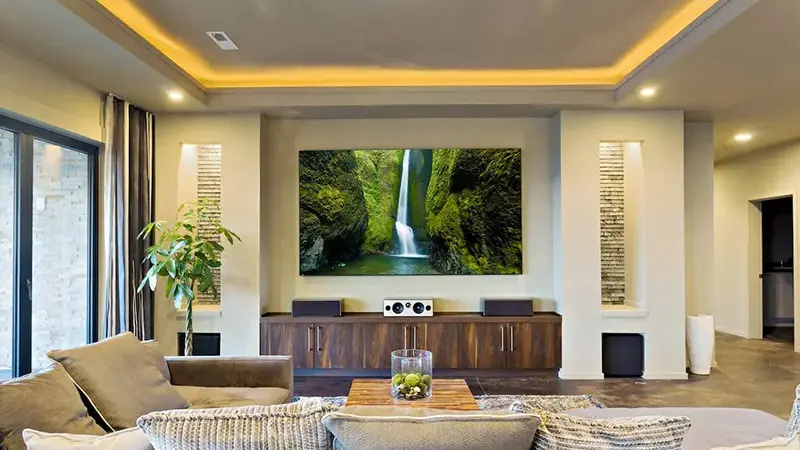
Choosing between LED tube and LED strip.
Homeowners must decide based on their specific needs. LED tube lights provide excellent, widespread illumination for areas like kitchens, garages, and basements, where bright, even light is paramount. Conversely, LED strip lights excel in enhancing the aesthetic appeal of living spaces, offering flexible installation options and a wide array of colors.
LED tubes are perfect for general lighting.
LED strips offer ambiance creation. Optimal usage depends on the desired lighting impact—tubes for utility, strips for decoration.
Both types can transform residential spaces, enhancing functionality and mood. By understanding their strengths and potential applications, homeowners can effectively utilize these lighting solutions to create inviting, energy-efficient environments tailored to their individual tastes. Thus, the choice between LED tube vs LED strip becomes a pivotal decision in elevating any home’s illumination strategy.
Commercial Uses
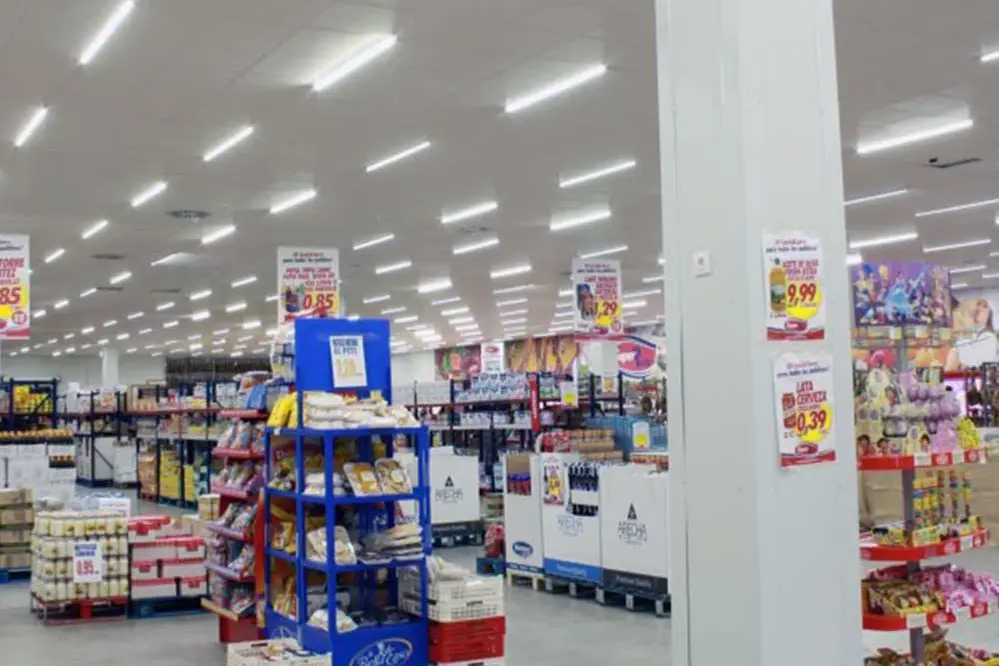
In the bustling realm of commercial applications, lighting plays a crucial role in creating productive environments.
Since 2016, numerous enterprises, ranging from corporate offices to industrial facilities, have explored various lighting solutions to enhance their workspaces and operational efficiencies.
When one considers the debate of LED tube vs LED strip, it’s imperative to recognize their distinct advantages in commercial settings. For spaces requiring robust, comprehensive illumination, LED tube lights are unparalleled.
These lights efficiently brighten large work areas, ensuring that every corner is well-lit. This attribute makes them ideal for places like warehouses, retail stores, and office spaces where consistent and clear lighting is essential for daily operations.
Conversely, LED strip lights offer unique benefits, particularly for design-centric commercial environments. From accentuating architectural features to creating engaging retail displays, their flexibility and aesthetic versatility make them indispensable for creative lighting solutions that inspire and captivate.
Design and Flexibility
LED tube lights boast a robust design, ideal for consistent illumination across large areas.
Since 2016, these lights have revolutionized commercial environments, making them a staple in high-demand industries. Their rigid structure and durable casings ensure that they withstand the test of time, providing reliable lighting in heavy-use areas where stability and longevity are paramount.
Conversely, LED strip lights offer unparalleled flexibility, allowing them to bend and conform to various architectural elements. Their adhesive backing enables seamless installation in spaces that demand creativity and precision. This makes them the go-to choice for intricate lighting designs, whether under cabinets, around displays, or highlighting unique structural details.
In addition to their adaptability, LED strip lights come in various colors and can be customized to fit specific aesthetic needs. This level of personalization ensures that businesses can align their lighting design with their brand’s identity, enhancing the overall ambiance and customer experience.
Ultimately, the choice between LED tube and LED strip lights depends on the specific application and design requirements. Both options offer distinct advantages, ensuring that businesses can find the perfect lighting solution to meet their unique needs.
Maintenance Requirements
LED tube lights require minimal maintenance, thanks to their robust design and long lifespan.
Typically, LED tube lights feature a straightforward installation process and a durable build, which reduces the frequency and complexity of service needs. Their sealed construction protects against dust and moisture, enhancing their reliability over time, particularly in environments that experience heavy use.
Comparatively, LED strip lights may demand a bit more attention. Due to their flexible nature, they may be more susceptible to wear and tear, necessitating periodic inspections to ensure optimal performance and replace any damaged sections that could impact lighting quality.
Overall, both LED tube and LED strip lights present relatively low-maintenance lighting solutions. While LED tube lights offer exceptional durability suitable for high-demand areas, LED strip lights compensate with easy installation and customization opportunities. Regardless, both options promise substantial reductions in maintenance efforts and costs compared to traditional lighting.
Environmental Impact
Evaluating the environmental impact of LED tube vs LED strip lights unveils compelling insights into their sustainability. Both types of lighting solutions boast impressive energy efficiency, which plays a notable role in lowering carbon emissions.
Their reduced energy consumption stems from advanced LED technology. This innovation significantly cuts down on electricity requirements. In turn, it alleviates the strain on power grids.
While LED tube lights offer excellent longevity, minimizing waste through reduced replacements, LED strip lights benefit from their versatile design and energy-efficient operation. This versatility allows for creative installations that can maximize ambient lighting without excessive energy use, further contributing to environmental benefits.
Ultimately, the environmental merits of LED tube vs LED strip lights hinge on their ability to significantly lower energy consumption and prolong operative life compared to conventional bulbs. Thus, integrating either solution can empower eco-conscious decisions, fostering a brighter, greener future through sustainable and energy-efficient lighting solutions.
User Reviews and Feedback
Users have shared varied experiences about their lighting solutions.
Many customers appreciate the robustness of LED tube lights, praising their reliability and ease of installation. Enthusiasts often highlight how these lights provide uniform and bright illumination, particularly in workspaces and commercial settings, ensuring that they meet professional lighting standards effectively.
Conversely, users find LED strip lights incredibly versatile and aesthetically pleasing. Their flexibility allows for creative installations in residential and retail environments, making them a favored choice for accent and decorative lighting.
Moreover, feedback reveals broad satisfaction with the energy efficiency and durability of both lighting options. Sustainability advocates particularly commend how these LED solutions reduce both energy consumption and maintenance needs, supporting green initiatives and contributing to long-term cost savings.
Conclusion: Making the Right Choice
In conclusion, when comparing LED tube vs LED strip lights, the choice ultimately depends on the intended application. LED tube lights are ideal for functional, uniform lighting in workspaces, promoting productivity and efficiency. On the other hand, LED strip lights excel in creating ambiance and adding decorative highlights, offering unparalleled versatility and aesthetic appeal. Understanding the unique benefits of each option allows for informed decision-making tailored to specific lighting needs and preferences.
For those seeking expert guidance and top-quality products, turning to a reputable manufacturer like Unitop can make all the difference. As a professional Chinese manufacturer specializing in LED strip lights and LED neon strips, Unitop combines innovation with reliability to ensure customers receive the best possible lighting solutions. Whether one needs expansive lighting for commercial projects or custom lighting designs for residential applications, Unitop’s expertise and extensive product range can illuminate any space brilliantly. To explore their offerings and discover how their high-performance LED solutions can meet your specific needs, reach out to Unitop and take the next step towards transforming your lighting aspirations into reality.
